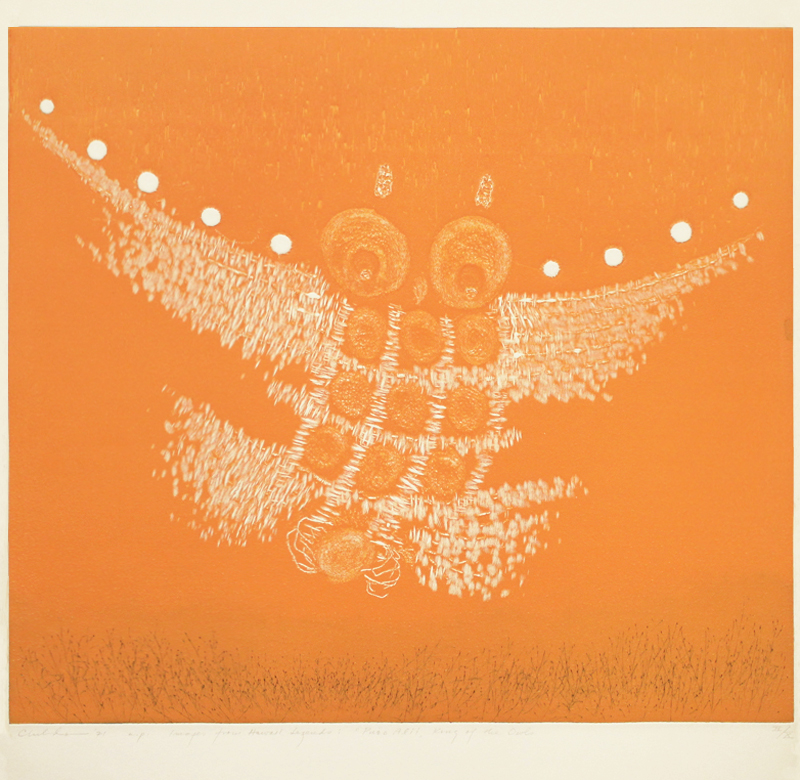Puëo Alii. King of the Owls is a color intaglio and collagraph created in 1971by American artist Bernard Childs (1910-1985). This impression is pencil signed, dated, titled, and inscribed “Images from Hawaii Legends.” It is an artist’s proof and numbered II/X. Puëo Alii. King of the Owls was printed by the artist on cream Arches Velin and the platemark measures 17-1/2 x 19-5/8 inches. Puëo Alii. King of the Owls was included in the Eighth International Exhibition of Prints in Tokyo in 1972 and was listed as number 137 in the accompanying catalog.
Judith Childs kindly shared this backstory of Puëo Alii. King of the Owls: “Bernard loved myths. When architect friends asked him to create a series of prints for a hotel they were designing in Honolulu, he immediately began reading every Hawaiian legend he could find and chose nine for his “Images from Hawaii Legends.” He also liked owls Before the arrival of mainland explorers and colonists, the skies above Honolulu were filled with flocks of Hawaiian short eared owls (Puëo). What also inspired Bernard was the fact that it was the male who carried the eggs. Yes, that is an egg clasped in the claws of his king (Alii, or properly in Hawaiian, Ali'i).”
Bernard Childs met the Danish silversmith Peer Smed and later remarked: “From this great craftsman I learned the beauty of metals, the feel of them in my hands, the excitement of fashioning them and the use of the special tools that bring them to life.” He later mastered industrial tools and metalworking while employed as a machinist. Childs moved to Europe in 1951, living for a year in Italy before settling in Paris for the next fifteen years. In 1954, while spending a few months at Atelier 17 in Paris, Childs combined his interest in metal and knowledge of industrial tools to make experimental intaglio prints, using power tools to incise the plates.
Bernard Childs’ work was included in numerous
international solo and group exhibitions and is represented in the collections
of the Museum of Fine Arts Boston; the Brooklyn Museum, Brooklyn; the Fogg Art
Museum and the Fitzwilliam Museum, Cambridge; the Zimmerli Art Museum, Rutgers
University, New Brunswick; the Metropolitan Museum of Art, the New York Public
Library, and the Whitney Museum of American Art, New York; the Newark Public
Library, Newark; the Fine Arts Museums of San Francisco; the Worcester Art
Museum, Worcester; the Library of Congress, Washington, D.C.; the Butler
Institute of American Art, Youngstown; the Stedelijk Museum, Amsterdam, and the
Bibliothèque nationale de France, Paris.



